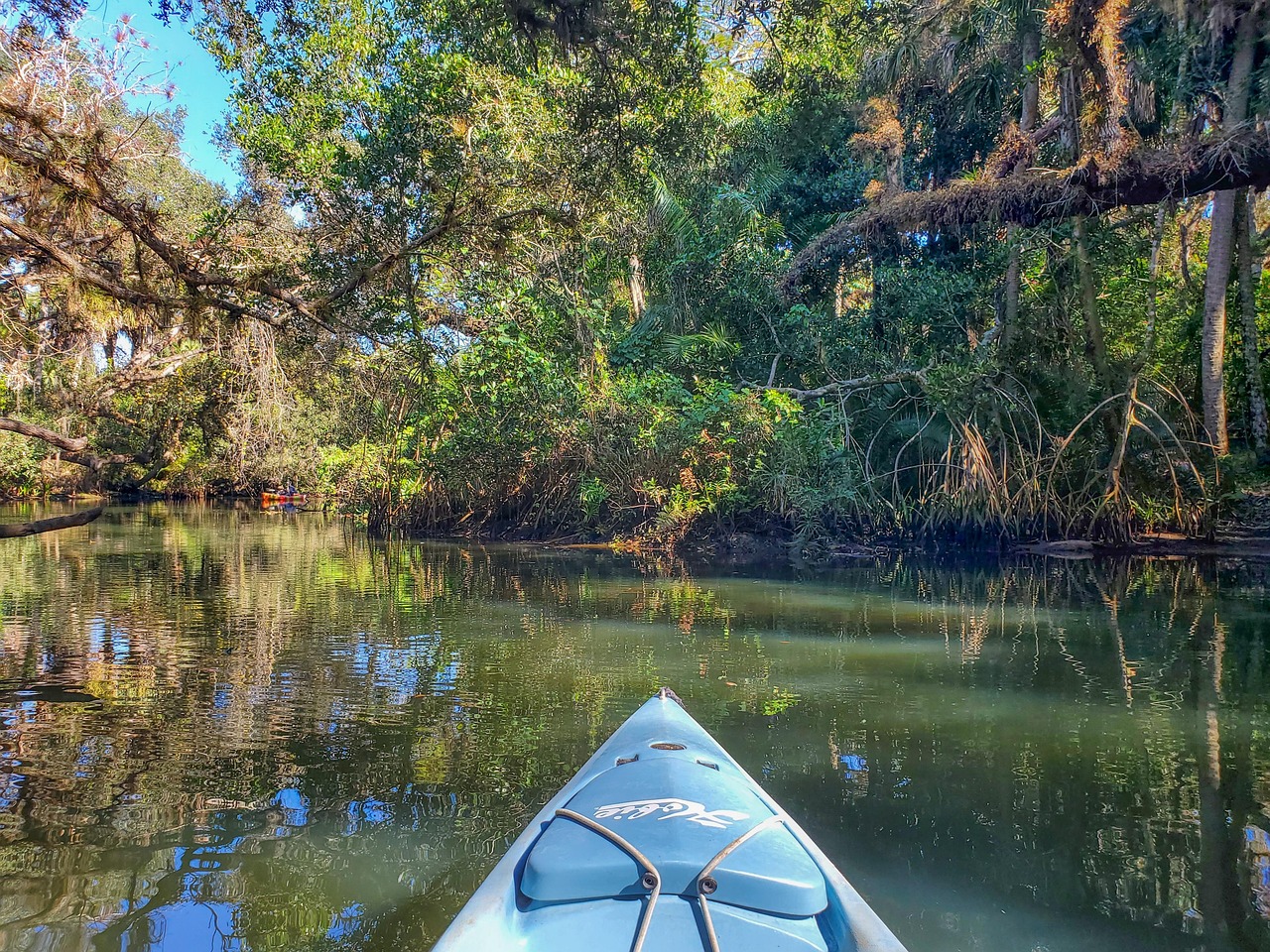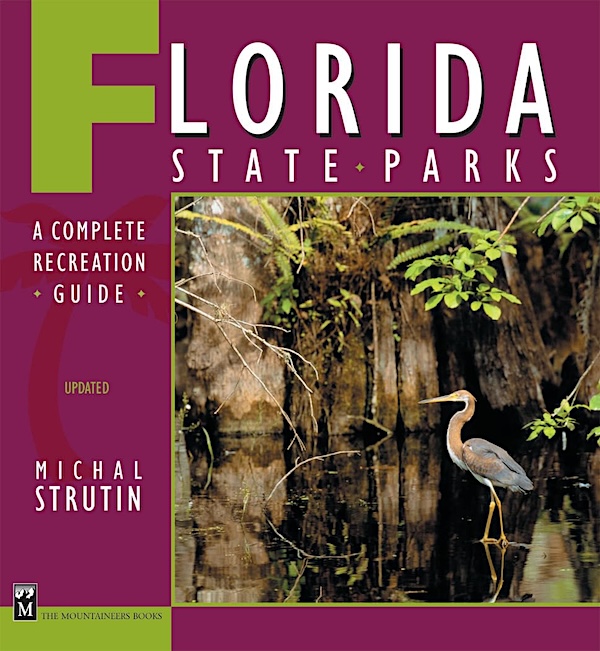
Origins and Course
The Steinhatchee River begins its journey in the Mallory Swamp of Lafayette County, just south of the town of Mayo, Florida. This blackwater river flows approximately 35 miles from its headwaters, winding its way through north-central Florida until it reaches the Gulf of Mexico between the twin communities of Steinhatchee and Jena.
Despite its name sounding Germanic, “Steinhatchee” actually derives from a Native American term meaning “river of man.” The river’s name has evolved over time, previously known as Hittenhatchee, Esteenhatchee, and Isteenhatchee before settling on its current designation. Interestingly, the town at its mouth was once called “Deadmans Bay” until the name was changed to Steinhatchee in 1931.
Ecological Significance
The Steinhatchee is classified as a blackwater river due to the tannins it collects from decaying vegetation, giving it a distinctive dark tint. This creates a unique ecosystem that supports diverse wildlife and plant species. The river’s course features several notable landmarks, including:
- Steinhatchee Falls: A picturesque limestone ledge creating a rare Florida waterfall
- Steinhatchee Rise: A protected spring that contributes to the river’s flow
- Pristine Upper Stretches: Remote and undeveloped sections with no visible human habitation for the first mile or so
The river forms a natural boundary between Dixie and Taylor Counties in its lower portions, creating an important ecological and geographical dividing line in the region.
Connection to Perry
Perry, the county seat of Taylor County, sits approximately 38 miles north of Steinhatchee, serving as the region’s commercial and administrative hub. While the two communities are distinctly different in character, they share deep historical and economic connections:
- Historical Trade Route: The Steinhatchee River historically provided transportation access from the Gulf to inland communities, with Perry serving as an important trading post and timber-processing center.
- Tourism Corridor: Today, the route between Perry and Steinhatchee via Keaton Beach forms a scenic 43-mile corridor popular with cyclists, nature enthusiasts, and tourists exploring Taylor County’s natural treasures.
- Economic Partnership: Perry provides services, accommodations, and commercial support for the smaller coastal community of Steinhatchee, while Steinhatchee’s Gulf access and fishing industry contribute significantly to Taylor County’s economy and identity.
- Administrative Connection: As the county seat, Perry houses the government offices that manage public lands, waterways, and wildlife areas along the Steinhatchee, including the important Tide Swamp Unit of the Big Bend Wildlife Management Area.
Environmental Treasures
The Steinhatchee River Basin contains several environmental wonders that have recently captured scientific attention:
Paleontological Discoveries
In June 2022, fossil hunters discovered an extraordinary cache of Ice Age animal remains in the riverbed, including giant sloths, tapirs, ancient horses, and armadillos dating back approximately 500,000 years. This remarkable find occurred when the river eroded into an ancient sinkhole that had preserved these specimens, offering scientists a rare glimpse into Florida’s prehistoric past from the middle Irvingtonian period.
Rich Aquatic Ecosystem
The fertile deposits from the Steinhatchee River and other Big Bend waterways have created one of the world’s most productive ecosystems in Apalachee Bay. The gradual slope of the Gulf bottom results in vast areas of shallow water ideal for marine life to thrive. This ecological richness supports:
- Diverse fish species including grouper, snapper, redfish, trout, and tarpon
- The famous summer scallop season
- Commercial fishing operations vital to the local economy
- Recreational activities that draw tourists from across the Southeast
Recreation and Tourism
The Steinhatchee River provides numerous recreational opportunities that connect Perry with the Gulf Coast:
- Paddling: The six-mile Steinhatchee River Paddling Trail from Steinhatchee Falls to the Jena Boat Ramp offers an ideal experience for beginning canoeists and kayakers.
- Fishing: Both freshwater and saltwater fishing opportunities abound, with the river’s mouth serving as a launching point for Gulf fishing expeditions.
- Scalloping: During summer months (typically July through September), the shallow Gulf waters near the river’s mouth become a popular destination for families harvesting bay scallops.
- Wildlife Viewing: The undeveloped sections of the river provide excellent opportunities to spot egrets, herons, fish, and various woodland creatures.
Environmental Protection
The Steinhatchee River is subject to various environmental protection measures, including the establishment of Minimum Flows and Levels (MFLs) by the Suwannee River Water Management District. These regulations aim to ensure water availability for present and future needs while preventing significant harm to the area’s natural resources.
As climate change and development pressures increase throughout Florida, the preservation of natural waterways like the Steinhatchee becomes increasingly important. Recent hurricanes, including Idalia in 2023 and Debby in 2024, have underscored the vulnerability of coastal communities along the river, highlighting the need for resilient environmental management practices.
Connecting Past and Future
The Steinhatchee River continues to play a vital role in connecting Perry with Florida’s Gulf Coast, both physically and economically. As Taylor County balances economic development with environmental preservation, this natural waterway stands as a symbol of the region’s wild beauty and natural abundance.
For visitors to Perry looking to experience “Old Florida” at its finest, a journey down Highway 361 to the mouth of the Steinhatchee offers a perfect day trip through some of the state’s most unspoiled landscapes, culminating in the charming fishing village where this remarkable river meets the Gulf of Mexico.



Leave a Reply